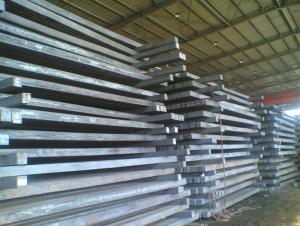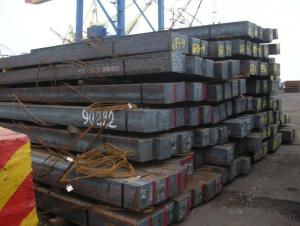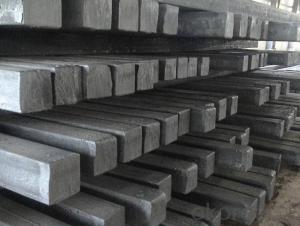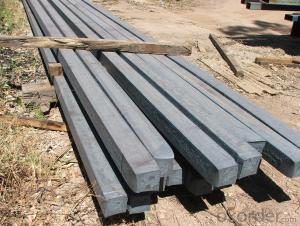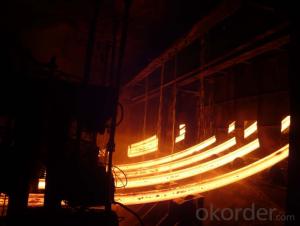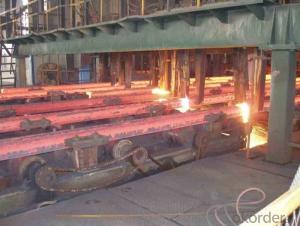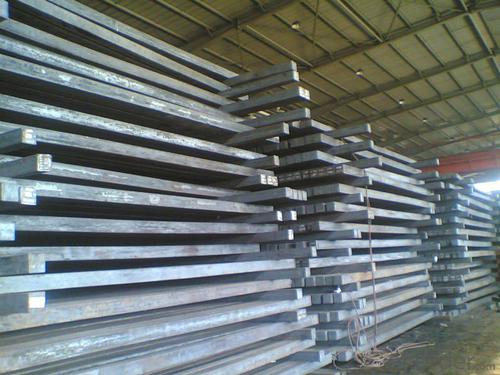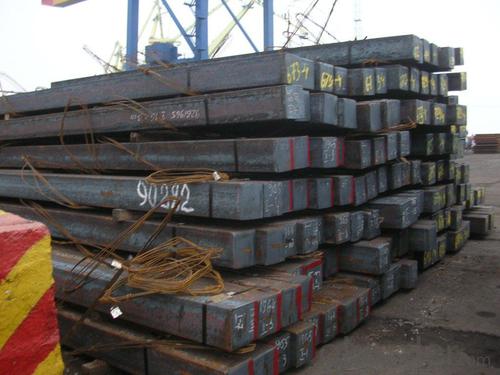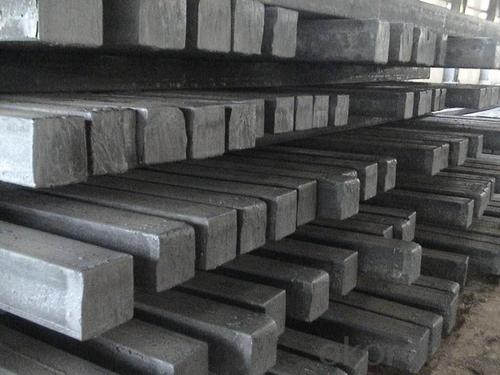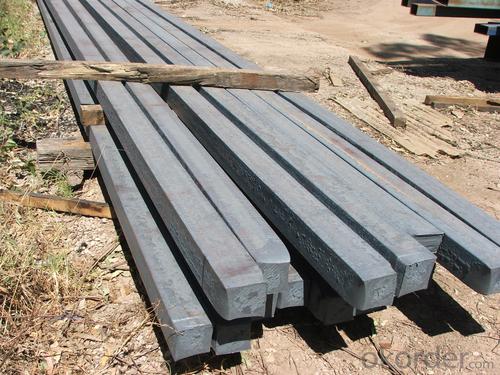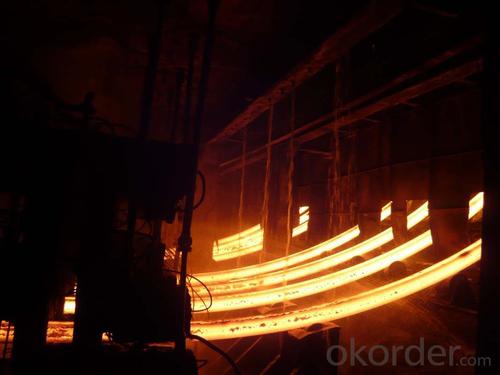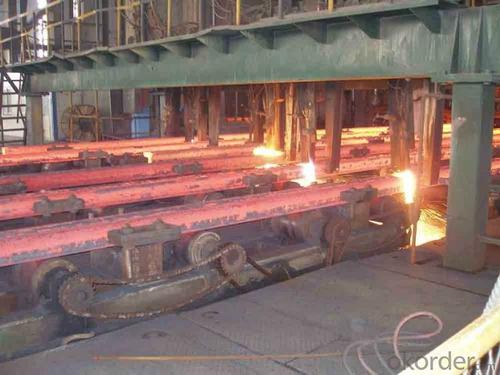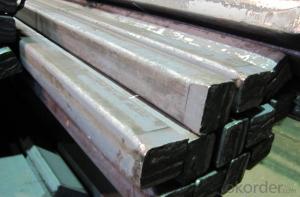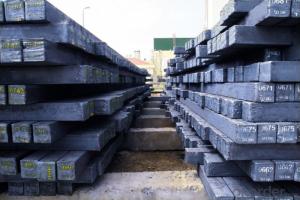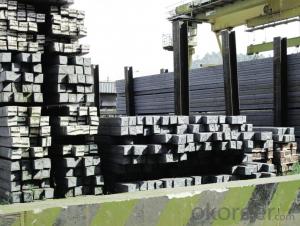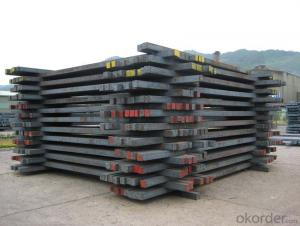Hot Rolled Square Steel Billet 3SP Standard 180mm
- Loading Port:
- Shanghai
- Payment Terms:
- TT OR LC
- Min Order Qty:
- 2000 m.t.
- Supply Capability:
- 10000 m.t./month
OKorder Service Pledge
OKorder Financial Service
You Might Also Like
Structure of Hot Rolled Square Steel Billet 3SP Standard 180mm
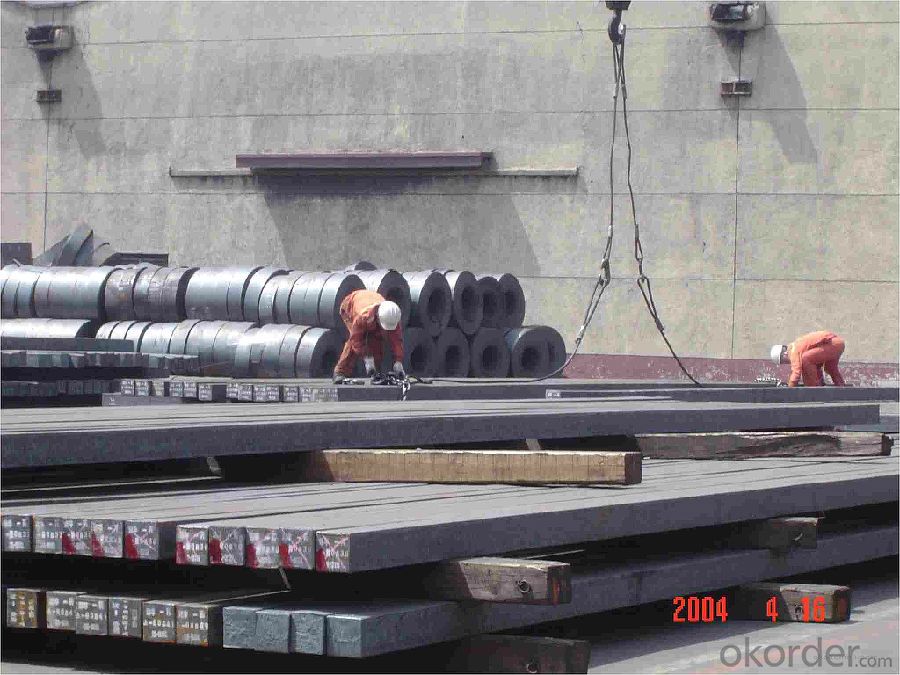
Description of Hot Rolled Square Steel Billet 3SP Standard 180mm
PPGI is made by cold rolled steel sheet and galvanized steel sheets as baseplate, through the surface pretreatment (degreasing, cleaning, chemical conversion processing), coated by the method of continuous coatings (roller coating method),
and after roasting and cooling. Zinc coating: Z60, Z80, Z100, Z120, Z180, Z275, G30, G60, G90
Alu-zinc coating: AZ60, AZ80, AZ100, AZ120, AZ180, G30, G60, G90
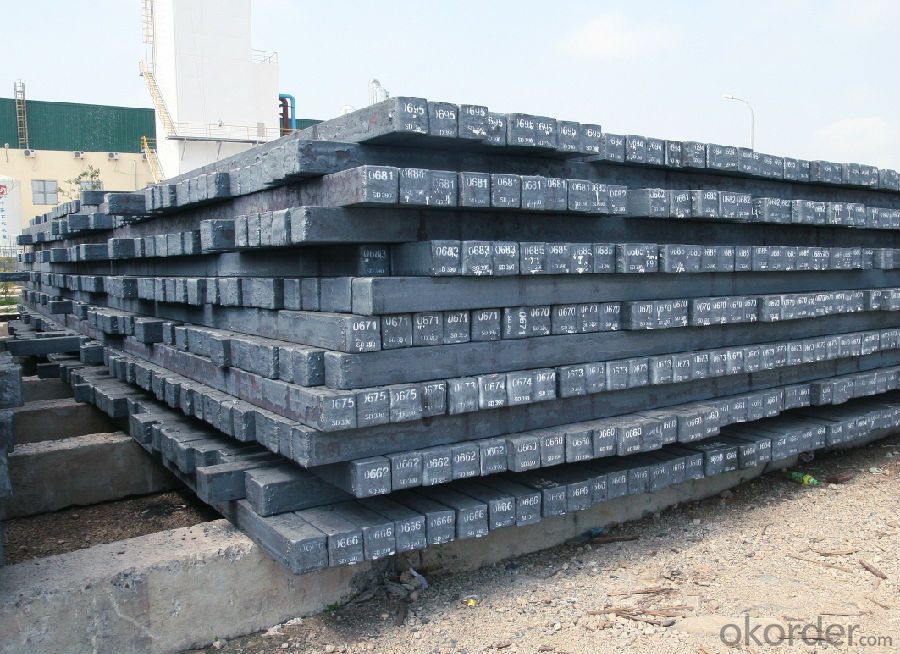
Main Feature of Hot Rolled Square Steel Billet 3SP Standard 180mm
1) Excellent corrosion resistance: The zinc layer provides a good protection of Pre-painted Galvanizeed Steel Sheet.
2) High heat resistance: The reflective surface of the material aids in efficiently reflecting the sunlight away and in turn reducing the amount of heat transmitted. The thermal reflectivity converts into energy savings.
3) Aesthetics: Pre-Painted Galvanized steel sheet is available in plethora of patterns and multiple sizes as per the requirements that given by our customers.
4) Versatility: can be used in the various areas.Standard seaworthy export packing: 3 layers of packing, inside is kraft paper, water plastic film is in the middle and outside GI steel sheet to be covered by steel strips with lock, with inner coil sleeve.
Applications of Hot Rolled Square Steel Billet 3SP Standard 180mm
1) Automotive bodies: filters, fuel tanks, etc.
2) Construction materials: roofings, welding pipes,
3) Electric and electronic appliances: computer cans, etc.
4) Steel cans: containers, etc.
5) Steel furniture: washing machines, refrigerators, microwaves, etc.
6) Drums
7) Office equipment: printer, recorders, etc.
8) Motors and transformers
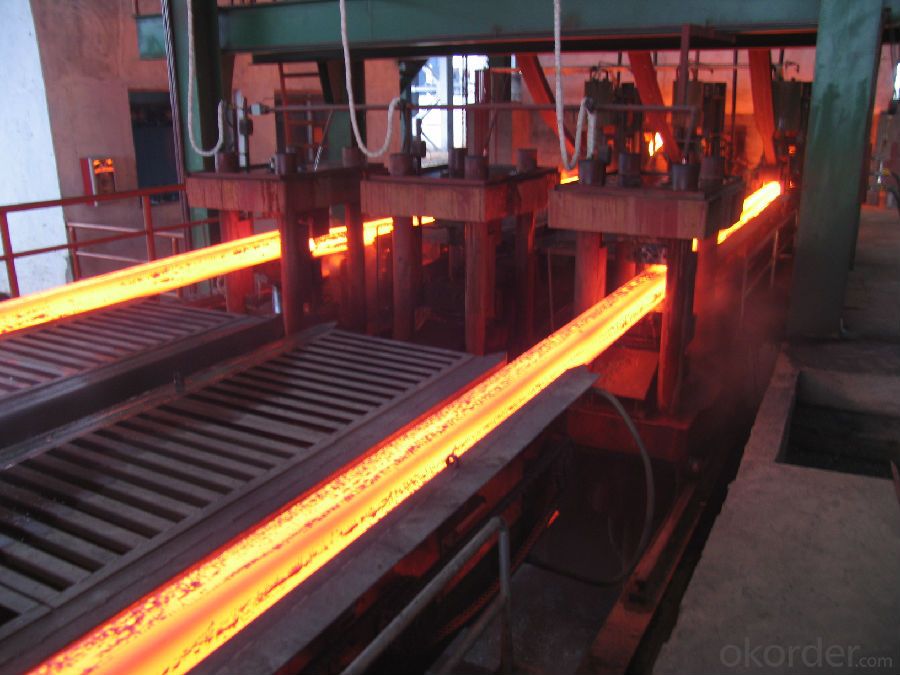
Specifications of Hot Rolled Square Steel Billet 3SP Standard 180mm
| Classified symbol | Yield Point Minimum N/mm2 | Tensile Strength Minimum | Elongation Minimum % | Application | ||||
| N/mm2 | Nominal Thickness mm (t) | |||||||
| JIS | Yogic | 0.25-0.4 | 0.4-0.6 | 0.6-1.0 | 1.0-1.6 | |||
| G3312 | specification | |||||||
| CGCC | CGCC | -205 | -270 | -20 | -21 | -24 | -24 | Commercial |
| CGCD | CGCD | --- | 270 | --- | 27 | 31 | 32 | Drawing |
| --- | CG340 | 245 | 340 | 20 | 20 | 20 | 20 | Structural |
| CGC400 | CG400 | 295 | 400 | 16 | 17 | 18 | 18 | Structural |
| CGC440 | CG440 | 335 | 440 | 14 | 15 | 16 | 18 | Structural |
| CGC490 | CG490 | 365 | 490 | 12 | 13 | 14 | 16 | Structural |
| CGC570 | CG570 | 560 | 570 | --- | --- | --- | --- | Structural |
| ASTM Designation | Yield Point Minimum | Tensile Strength Minimum | Elongation Minimum % | Application | Q/BQB 445-2004(China standard) | ASM A653/A653M | JISG 3312 | |
| ksi(MPa) | ksi(MPa) | TDC51D+Z | (CS TYPE A+Z) | CGCC | ||||
| A653(M)-99 CS TYPE A,B,C | --- | --- | --- | Commercial | TDC52D+Z | CGCD | ||
| A653(M)-99 FS | --- | --- | --- | Lock Forming | TS250GD+Z | (G250+Z) | - | |
| A653(M)-99 DS | --- | --- | --- | Drawing | TS300GS+Z | (G300+Z) | CGC 400 | |
| A653(M)-99 SS Grade33(230) | 33(230) | 45(310) | 20 | Structural | TS350GD+Z | (G350+Z) | CGC490 | |
| A653(M)-99 SS Grade37(255) | 37(255) | 52(360) | 18 | Structural | TS550GD+Z | (G550+Z) | CGC570 | |
| A653(M)-99 SS Grade40(275) | 40(275) | 55(380) | 16 | Structural | ||||
| A653(M)-99 SS Grade50(345) | 50(345) | 65(450) | 12 | Structural | ||||
| A653(M)-99 SS Grade80(550) | 80(550) | 82(570) | --- | Structural | ||||
FAQ of Hot Rolled Square Steel Billet 3SP Standard 180mm
We have organized several common questions for our clients,may help you sincerely:
1. How Can I Visit There?
Our company is located in Tianjin City, China, near Beijing. You can fly to Tianjin Airport Directly. All our clients, from home or aboard, are warmly welcome to visit us!
2. How Can I Get Some Sample?
We are honored to offer you sample.
3. Why choose CNBM?
1, ISO, BV, CE, SGS approved.
2, Competitive price and quality.
3, Efficient service team online for 24 hours.
4, Smooth production ability(50000tons/month) .
5, quick delivery and standard exporting package.
6, Flexible payment with T/T, L/C, Paypal, Kunlun bank, etc.
- Q: How are steel billets inspected for internal defects?
- Steel billets are typically inspected for internal defects using non-destructive testing methods such as ultrasonic testing or magnetic particle inspection. These techniques allow for the detection of any internal flaws or defects in the billet without causing any damage to the material.
- Q: What are the specifications for stainless steel billets used in the marine industry?
- The specifications for stainless steel billets used in the marine industry typically include a specific grade of stainless steel, such as 316 or 316L, which offers excellent corrosion resistance in marine environments. These billets are often required to meet certain standards, such as ASTM A276 or ASTM A484, which outline the chemical composition, mechanical properties, and dimensional tolerances for stainless steel products. Additionally, the billets may need to undergo specific heat treatment processes, such as annealing or solution treatment, to ensure optimal strength and corrosion resistance.
- Q: What are the main factors affecting the ductility of steel billets?
- The ductility of steel billets is affected by several primary factors. First and foremost, the carbon content in the steel plays a pivotal role. Higher levels of carbon generally decrease ductility and make the steel more brittle. This is due to the tendency of carbon atoms to form strong bonds with iron atoms, resulting in a material that is harder and less malleable. The composition of other alloying elements in the steel also has an impact on ductility. Depending on their concentration, elements like manganese, silicon, and phosphorus can have varying effects on the steel's ductility. For instance, manganese can enhance ductility while phosphorus can reduce it. The heat treatment process is another crucial factor that significantly affects the ductility of steel billets. Rapid cooling, known as quenching, can enhance the strength of the steel but may simultaneously decrease its ductility. Conversely, annealing, which involves heating the steel and gradually cooling it, can improve the material's ductility. Furthermore, the presence of impurities and defects in the steel can influence its ductility. Inclusions, such as non-metallic particles, can act as stress concentrators and diminish the material's ability to deform plastically. Similarly, cracks, voids, and other defects can weaken the steel and lower its ductility. Lastly, the grain size of the steel can impact its ductility. Fine-grained steels generally exhibit higher ductility compared to coarse-grained ones. This is because smaller grain boundaries create more obstacles for dislocation movement, thereby increasing resistance to deformation. In conclusion, the ductility of steel billets is influenced by multiple factors, including carbon content, alloying elements, heat treatment, impurities and defects, and grain size. It is crucial to comprehend and control these factors to ensure the desired ductility properties of steel.
- Q: What are the specifications for alloy steel billets used in the defense industry?
- The specifications for alloy steel billets used in the defense industry typically include requirements for high strength, durability, and resistance to corrosion and impact. Additionally, they may specify the alloy composition, heat treatment processes, dimensional tolerances, and surface finish, among other parameters, to ensure the billets meet the specific performance needs of defense applications.
- Q: How are steel billets used in the production of industrial valves?
- Steel billets are an essential component in the production of industrial valves. These billets serve as the raw material for manufacturing valve bodies, which are the main structural component of the valve. To begin the production process, steel billets are first heated to a specific temperature, usually through the use of a furnace. This heating process is crucial as it allows the billets to be malleable and easily shaped into the desired valve body design. Once the billets reach the required temperature, they are transferred to a special machine called a forging press. In the forging press, immense pressure is applied to the heated billet, causing it to take on the shape of a valve body. This process, known as forging, ensures that the valve body is strong, durable, and able to withstand the high pressures and temperatures of industrial applications. After the forging process, the valve bodies are then machined to achieve the final shape and dimensions. This involves using cutting tools to remove any excess material and refine the surface finish. The machined valve bodies are then inspected for quality assurance to ensure they meet the required specifications and standards. Once the valve bodies are ready, they undergo additional processes such as heat treatment and surface coating to enhance their strength, corrosion resistance, and overall performance. These treatments help to ensure that the valves can withstand harsh operating conditions and have a long service life. In summary, steel billets play a critical role in the production of industrial valves. They are heated and forged to create the valve bodies, which form the structural foundation of the valves. Through additional machining, heat treatment, and surface coating processes, the billets are transformed into high-quality valves that can effectively control the flow of fluids or gases in various industrial applications.
- Q: What are the different types of defects that can occur in steel billets?
- There are several types of defects that can occur in steel billets, including surface cracks, internal voids, segregation, inclusions, and dimensional inconsistencies. These defects can affect the quality and structural integrity of the billets and may require further processing or remedial measures to ensure their suitability for use in various applications.
- Q: How are steel billets tested for internal defects?
- Steel billets are tested for internal defects through a variety of non-destructive testing methods. One of the most common methods used is ultrasonic testing (UT). During this process, high-frequency sound waves are transmitted into the billet, and the reflections of these waves are analyzed to detect any internal defects such as cracks, voids, or inclusions. UT can provide accurate and detailed information about the size, location, and nature of the defects. Another method used is magnetic particle inspection (MPI). This technique involves magnetizing the billet and applying iron particles to its surface. If there are any internal defects, the magnetic field will cause these particles to gather around them, making them visible and detectable. Eddy current testing (ECT) is also employed to assess the internal quality of steel billets. It utilizes electromagnetic induction to create eddy currents within the material. Any changes in the electrical conductivity or magnetic permeability caused by internal defects can be detected by analyzing the variations in the induced current. Additionally, radiographic testing (RT) is utilized to inspect the internal structure of steel billets. X-rays or gamma rays are directed towards the billet, and the resulting radiographic image can reveal any internal defects such as voids, cracks, or inclusions. Other methods, such as dye penetrant testing and visual inspection, can also be used to detect superficial and near-surface defects in steel billets. These methods involve applying a liquid or dye to the surface of the billet, which will seep into any cracks or surface irregularities, making them visible under certain lighting conditions. Overall, a combination of these non-destructive testing methods is employed to ensure the quality and integrity of steel billets by effectively detecting any internal defects that could compromise their structural integrity and performance.
- Q: What are the main factors affecting the mechanical properties of steel billets?
- The main factors affecting the mechanical properties of steel billets include the composition of the steel, the heat treatment process, the grain size, and the presence of impurities or defects in the metal.
- Q: What industries rely heavily on steel billets?
- Several industries heavily rely on steel billets as a crucial raw material for their manufacturing processes. One such industry is the construction industry, which uses steel billets to fabricate structural components such as beams, columns, and reinforcement bars. Steel billets provide the required strength and durability necessary for constructing buildings, bridges, and other infrastructure projects. The automotive industry also heavily relies on steel billets. Steel billets are used to manufacture various automotive parts, including engine components, chassis, and suspension systems. The high strength and versatility of steel billets make them ideal for producing parts that can withstand rigorous conditions and ensure vehicle safety. In addition, the oil and gas industry heavily depends on steel billets for the production of pipelines, drill pipes, and other equipment used in exploration, extraction, and transportation processes. Steel billets are preferred due to their corrosion resistance, high pressure resistance, and ability to withstand extreme temperatures. Moreover, the machinery and equipment manufacturing industry extensively uses steel billets as a primary material for producing a wide range of machinery, including industrial machinery, agricultural equipment, and heavy-duty machinery. Steel billets provide the necessary strength, toughness, and machinability required for these applications. Furthermore, the aerospace industry relies on steel billets for manufacturing various aircraft components, such as landing gear, structural frames, and engine parts. Steel billets are chosen for their high strength-to-weight ratio, heat resistance, and ability to withstand the demanding conditions of aerospace applications. Overall, steel billets play a vital role in several industries, including construction, automotive, oil and gas, machinery and equipment manufacturing, and aerospace. The unique properties of steel billets make them indispensable in these industries, ensuring the production of strong, durable, and reliable products.
- Q: What are the common surface defects found in steel billets?
- Some common surface defects found in steel billets are scale, cracks, laps, seams, and surface decarburization.
Send your message to us
Hot Rolled Square Steel Billet 3SP Standard 180mm
- Loading Port:
- Shanghai
- Payment Terms:
- TT OR LC
- Min Order Qty:
- 2000 m.t.
- Supply Capability:
- 10000 m.t./month
OKorder Service Pledge
OKorder Financial Service
Similar products
Hot products
Hot Searches
Related keywords
